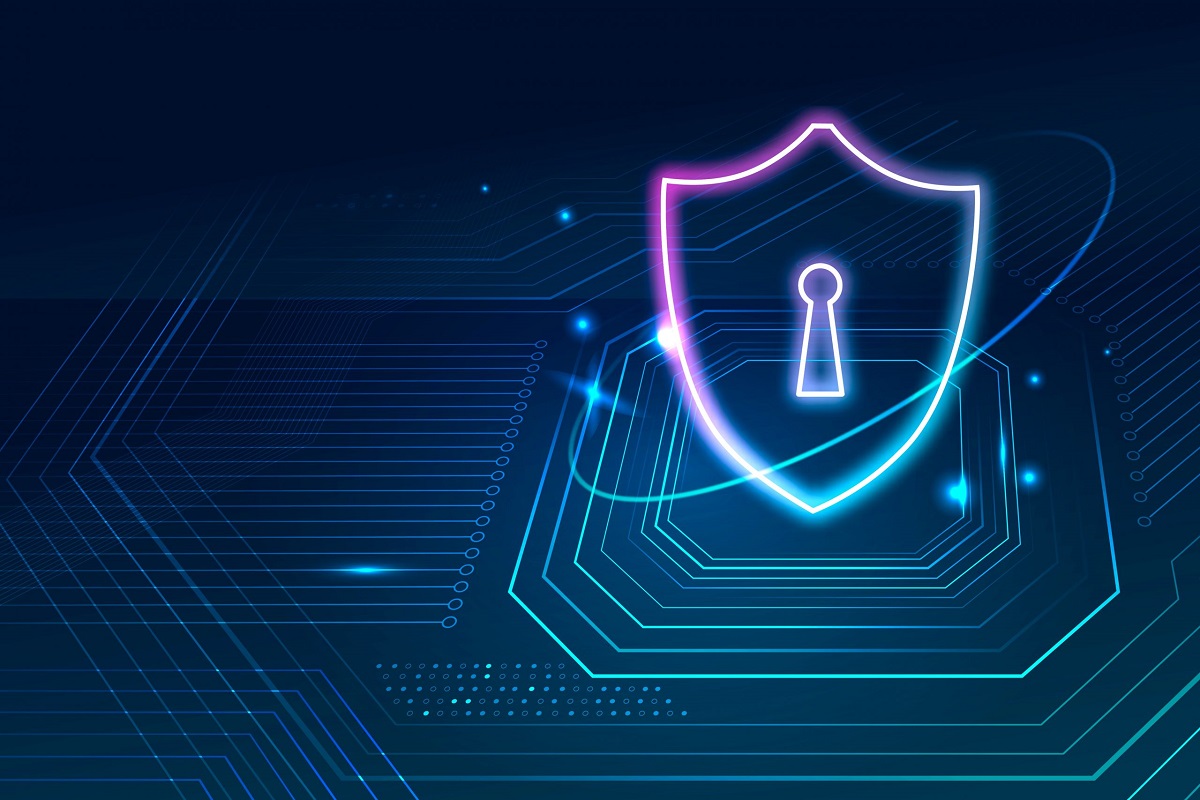The Importance of Small Business Cyber Security: Safeguarding Your Customers’ Data

In today’s digital age, where technology reigns supreme and online transactions are the norm. Small businesses must recognize the paramount importance of cyber security. As a business owner. You hold not only your own success in your hands but also the trust and sensitive information of your valued customers. From financial data to personal details, it is crucial to safeguard this treasure trove from malicious attacks that could severely damage both your reputation and bottom line. Join us as we delve into the world of Small Business Cyber Security and explore practical steps you can take to fortify your defenses. Against ever-evolving threats lurking in the virtual realm. Prepare yourself for a thought-provoking journey towards an impenetrable fortress that ensures not only your survival but also cultivates unwavering trust among those who rely on you with their most precious asset – their data.
Introduction to Cyber Security for Small Businesses
Small businesses are a vital part of our economy, providing goods and services to local communities and creating jobs. However, with the increasing use of technology in business operations, small businesses are becoming more vulnerable to cyber attacks. In fact, according to the National Cyber Security Alliance, 43% of cyber attacks target small businesses. This is because many small businesses do not have the resources or knowledge to implement strong cybersecurity measures.
What is Cyber Security?
Cyber security refers to the protection of electronic systems, networks, and sensitive data from unauthorised access or malicious attacks. It includes all processes and technologies used to safeguard digital information from theft or damage.
Why is Cyber Security Important for Small Businesses?
As a small business owner, you may think that your company is too small to be targeted by cyber criminals. However, this is far from true. Hackers often see small businesses as easy targets because they tend to have weaker cybersecurity measures compared to larger corporations. Moreover, small businesses often hold valuable data such as customer information and financial records that can be lucrative for hackers.
The consequences of a cyber attack can be devastating for a small business. Not only does it put sensitive data at risk but it can also lead to financial losses due to downtime and reputational damage. A study by IBM found that the average cost of a data breach for a small business was $3.86 million in 2020.
Understanding the Threats
To effectively protect your business against cyber attacks, it is important to understand the common threats that small businesses face. These include:
- Phishing Scams: Phishing scams involve fraudulent emails or messages that trick users into providing sensitive information or downloading malware.
- Malware: Malware, short for malicious software, is any software designed to harm or exploit devices, networks, or data.
- Ransomware: Ransomware is a type of malware that locks access to a device or files until a ransom is paid.
- Social Engineering: Social engineering involves manipulating individuals through psychological tactics to gain access to sensitive information.
- Insider Threats: Insider threats refer to employees or former employees. Who intentionally or unintentionally cause harm to a company’s network, systems, or data.
Best Practices for Small Business Cyber Security
Here are some steps you can take to improve your small business’s cybersecurity:
- Create Strong Passwords: Use complex passwords and change them regularly. Avoid using the same password for multiple accounts.
- Train Employees on Cybersecurity: Educate your employees about the importance of cybersecurity and how they can help keep your business safe.
- Keep Software Up-to-Date: Make sure all software and operating systems are updated with the latest security patches and fixes.
- Use Firewalls and Antivirus Software: Install firewalls to protect your network and use antivirus software to scan for and remove any malware.
- Backup Data Regularly: In case of a cyber attack, having regular backups of your data can help you recover quickly without paying a ransom.
- Limit Access to Sensitive Data: Only give employees access to the data they need to do their job. This will reduce the risk of insider threats.
- Implement Multi-Factor Authentication: Require users to provide more than one form of identification (such as a password and a code sent to their phone) before accessing sensitive information.
- Use Secure Wi-Fi Networks: Avoid using public or unsecured Wi-Fi networks for business purposes as they can be easily compromised.
- Have an Incident Response Plan: Create a plan for how your business will respond in the event of a cyber attack.
- Seek Professional Help: Consider hiring a cybersecurity expert or consulting with an IT professional to assess your security measures and make recommendations for improvement.
Cybersecurity is crucial for small businesses in today’s digital age. By understanding common threats and implementing best practices. You can better protect your business from cyber attacks and minimise the potential damage in case of a breach. Remember to regularly review and update your security measures as technology and threats continue to evolve.
The Risks of Cyber Attacks on Small Businesses
Small businesses are often seen as easy targets for cyber attacks due to their limited resources and lack of robust security measures. In fact, according to a report by Verizon, 43% of all cyber attacks target small businesses. This is because they often hold valuable customer data. That can be used for identity theft or sold on the black market. As a small business owner, it is crucial to understand the risks posed by cyber attacks and take steps to safeguard your customers’ data.
- Financial Loss: One of the biggest risks of a cyber attack on a small business is financial loss. Hackers can gain access to sensitive financial information such as bank account details. Credit card numbers, and login credentials, which can lead to unauthorised transactions and drain your business’s funds. Moreover, recovering from such attacks can be costly. With the average cost for small businesses being around $200,000.
- Damage to Reputation: Small businesses rely heavily on word-of-mouth marketing and building trust with their customers. A cyber attack can not only result in financial losses. But also damage your reputation among customers who trust you with their data. In today’s digital age where news spreads quickly through social media platforms. Even one data breach can tarnish your brand’s image and make it difficult for you to attract new customers.
- Legal Consequences: With an increase in privacy laws such as GDPR (General Data Protection Regulation) and CCPA (California Consumer Privacy Act). Small businesses are legally obligated to protect their customers’ personal information. In case of a data breach, small businesses can face fines and penalties for not complying with these regulations. The legal costs associated with such consequences can be detrimental to the survival of a small business.
Understanding the Types of Cyber Threats
As technology continues to advance and more businesses rely on digital platforms, the risk of cyber threats also increases. Cyber threats refer to any malicious attempt to disrupt or gain unauthorised access to a computer system, network, or device. These threats come in various forms and can cause significant damage to a business. Especially small businesses that may not have robust cybersecurity measures in place.
It is crucial for small business owners to understanD. The types of cyber threats they face in order to effectively safeguard their customers’ data and protect their business from potential harm. In this section, we will discuss some of the most common types of cyber threats that small businesses should be aware of.
1. Malware
Malware is short for malicious software, which refers to any software designed to harm or exploit devices, networks, or data. This includes viruses, worms, Trojan horses, ransomware, spyware, and other types of malicious code. Malware can enter a system through email attachments, infected websites, or removable media such as USB drives. Once installed on a computer or network, it can steal sensitive information like customer data or financial records.
2. Phishing
Phishing is a type of social engineering attack where cybercriminals use deceptive tactics like fake emails or websites to trick individuals into providing sensitive information such as login credentials or credit card numbers.
3. Denial-of-Service (DoS) attacks
DoS attacks aim to disrupt the normal functioning of a network or website by overwhelming it with traffic. This causes the system to crash, denying access to legitimate users. DoS attacks can be carried out by multiple compromised devices under the control of a hacker, known as a Distributed Denial-of-Service (DDoS) attack.
4. Man-in-the-Middle (MitM) attacks
In a MitM attack, cybercriminals intercept and alter communication between two parties without their knowledge. This allows them to steal sensitive information like login credentials or financial data. MitM attacks can occur through unsecured networks, fake websites, or infected devices.
5. SQL injection
SQL injection is a type of web-based attack where hackers exploit vulnerabilities in a website’s code that interacts with its backend database. By inserting malicious SQL code into an input field on the website, hackers can gain unauthorised access to the database and steal sensitive information.
6. Zero-day exploits
A zero-day exploit refers to a vulnerability in software that is unknown to the vendor and has not been patched yet. Hackers can exploit these vulnerabilities until they are discovered and fixed by the software developer.
7. Password attacks
Password attacks involve using various methods such as guessing, brute force, or social engineering to gain access to a system or network by guessing or stealing passwords. Weak, easily guessable passwords make it easier for cybercriminals to carry out these attacks.
These are just some of the many types of cyber threats businesses may face. It is important for small business owners to stay informed about the latest threats and take proactive measures to protect their systems, networks, and data. This can include implementing strong password policies, regularly backing up data, using anti-malware software, and training employees on how to identify and avoid potential threats.
Importance of Safeguarding Customer Data
In today’s digital world, businesses of all sizes rely heavily on technology and the internet to store, process, and share sensitive data. This includes personal information such as credit card details, contact information, and other confidential data from customers. Therefore, it is crucial for small businesses to prioritise safeguarding their customers’ data from cyber threats.
Protecting customer data is not only a legal responsibility but also an ethical one. Customers trust businesses with their personal information when making purchases or utilising services. If this trust is breached due to a security breach or cyber attack, it can severely damage the reputation of a small business and result in financial loss.
One of the main reasons why safeguarding customer data is so important is because it helps prevent identity theft and fraud. Cybercriminals are always on the lookout for vulnerable targets to steal valuable information that can be used for fraudulent activities. Small businesses are often seen as easy targets since they may not have robust security measures in place compared to larger corporations.
Protecting Customer Data
Moreover, protecting customer data is essential for compliance with various laws and regulations related to privacy and security. For example, the General Data Protection Regulation (GDPR) in Europe mandates that businesses protect personal data of EU citizens at all times. Failure to comply with these regulations can result in hefty fines and legal consequences.
Aside from potential legal implications, a security breach that compromises customer data can also lead to financial losses for both the business and its customers. In addition to facing expensive lawsuits and penalties, small businesses may incur costs for data recovery, damage control, and implementing security measures to prevent future attacks. Customers, on the other hand, may experience financial loss if their personal information is used for fraudulent activities.
Protecting customer data also helps maintain customer loyalty and trust. In today’s competitive market, customers have numerous options when it comes to choosing products or services. If a business fails to protect their customers’ data, they risk losing their trust and loyalty. Customers are more likely to do business with companies that prioritise their privacy and security.
Safeguarding customer data is crucial for the success and sustainability of small businesses. It not only protects customers from identity theft and fraud but also helps businesses comply with laws and regulations, avoid financial losses, and maintain customer loyalty. As technology continues to advance and cyber threats become more sophisticated, small businesses must prioritise investing in robust security measures to protect their customers’ data.
Implementing Strong Password Protection
Implementing strong password protection is an essential aspect of small business cyber security. It is the first line of defence against unauthorised access to sensitive information and plays a crucial role in safeguarding your customers’ data.
Here are some key steps to follow when implementing strong password protection for your small business:
- Create Strong Password Policies: The first step towards strong password protection is establishing clear and strict policies for creating and managing passwords. These policies should include guidelines on password length, complexity, expiration, and restrictions on reusing old passwords.
- Use Complex Passwords: A complex password contains a combination of uppercase and lowercase letters, numbers, special characters, and should be at least 8-10 characters long. Avoid using easily guessable information such as birth dates or names in your passwords.
- Implement Multi-Factor Authentication: Multi-factor authentication (MFA) adds an extra layer of security by requiring users to provide two or more forms of identification before accessing sensitive information. This can include a unique code sent to their phone or biometric verification like fingerprint scanning.
- Regularly Change Passwords: It’s good practice to update passwords regularly, ideally every 90 days or less. This reduces the risk of someone gaining unauthorised access to your accounts through compromised credentials.
- Educate Employees on Cyber Security Best Practices: Your employees play a critical role in maintaining strong password protection for your business. Educate them on the importance of creating complex passwords and avoiding sharing login credentials with anyone.
Utilising Secure Payment Systems
In today’s digital age, small businesses are increasingly utilising online platforms to conduct transactions and interact with their customers. While this has greatly increased convenience and efficiency, it also brings about new risks and threats to the security of customers’ data. As a small business owner, it is your responsibility to ensure that your customers’ personal information is protected from cyber attacks and breaches.
One crucial aspect of safeguarding your customers’ data is by utilising secure payment systems. These are specialised software or services that facilitate the secure processing of electronic transactions, such as credit card payments. By implementing these systems, you can greatly reduce the risk of sensitive information being compromised during financial transactions.
There are various types of secure payment systems available in the market, each offering different levels of security measures. Some common examples include Payment Card Industry Data Security Standard (PCI DSS) compliant solutions, tokenization technology, and end-to-end encryption.
PCI DSS
PCI DSS compliance is a set of standards created by major credit card companies to ensure the secure handling of cardholder data during payment processes. This includes requirements for strong passwords, network security protocols, regular system updates and vulnerability testing. By using a PCI DSS compliant system, you can reassure your customers that their financial information is being handled with utmost care.
Tokenization technology works by replacing sensitive customer data with unique identification symbols called tokens. These tokens are randomly generated and have no value on their own, making them useless to hackers even if intercepted during transmission. This method adds an extra layer of protection to sensitive data, reducing the risk of it being compromised.
End-to-end encryption is another effective security measure that ensures all data transmitted during a transaction is encrypted from the point of entry until it reaches its final destination. This means that sensitive information cannot be accessed or read by anyone other than the intended recipient.
When choosing a secure payment system for your business, consider factors such as cost, ease of use, and compatibility with your existing systems. It is also important to regularly review and update your security measures to stay ahead of emerging threats.
There are other measures you can take to protect your customers’ data. These include:
- Training employees: Ensure that all employees who handle sensitive information are trained in proper data handling procedures and are aware of potential security risks.
- Regularly backing up data: In case of a breach or system failure, having recent backups of your data can minimise disruptions and protect your customers’ information from being permanently lost.
- Limiting access to customer data: Only allow authorised personnel access to sensitive customer information and implement strict password management policies.
- Using firewalls and antivirus software: Install firewalls and antivirus software on all devices used for processing transactions to prevent unauthorised access or malware attacks.
- Keeping systems up to date: Regularly update your systems and software to ensure they have the latest security patches and protections against known vulnerabilities.
By utilising secure payment systems and implementing these measures, you can greatly reduce the risk of your customers’ data being compromised. This not only protects your customers, but also helps build trust and credibility for your business.
Conclusion:
In conclusion, prioritising cybersecurity is crucial for the success of small businesses in today’s digital landscape. By implementing these tips, you can better protect your business from cyber threats and safeguard your customers’ information, ultimately helping your business thrive. Remember, investing in cybersecurity is not an expense but an investment in the long-term success of your business.
![]()






